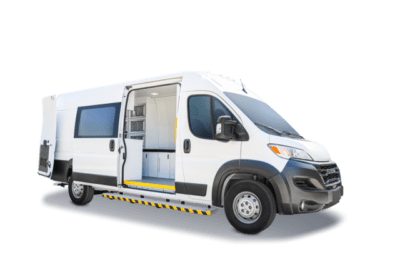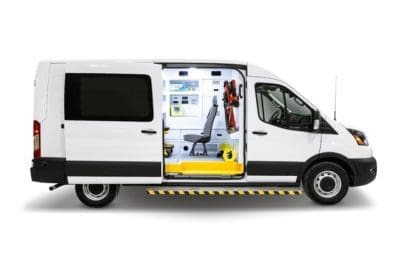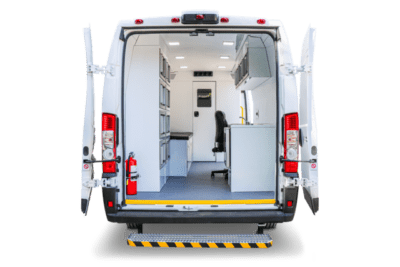Whether you’re operating a mobile clinic or accessible transportation unit in the scorching heat of Texas or the freezing winters of Minnesota, maintaining a comfortable environment is critical for both patient care and staff performance.
Temperature extremes—hot or cold—can impact not just comfort, but also safety, trust, and the quality of care provided.
Not Sure Which HVAC is Right for You?
The Temperature Map: Find the Perfect HVAC Solution for Your Mobile Clinic
Explore our interactive Temperature Map to see which HVAC options for Mobile Clinics are ideal for your region. We’ve categorized areas based on a range of climates—both hot and cold—so you can choose the perfect system for your Mobile Medical units

Cold Climates (Alaska)
Recommended System: Engine-connected heating and cooling, with optional standalone heater for overnight use.
How it Works: Provides heat and cooling while driving; standalone heater warms the interior when parked.
Best for: Frigid regions needing reliable heating and optional overnight warmth.
Considerations: Add a standalone heater for continuous heat when parked.
Cold Climates (Northern U.S., Midwest, Mountain Regions, Alaska)
Recommended System: Engine-connected heating and cooling, with optional standalone heater for overnight use.
How it Works: Provides heat and cooling while driving; standalone heater warms the interior when parked.
Best for: Frigid regions needing reliable heating and optional overnight warmth.
Considerations: Add a standalone heater for continuous heat when parked.
Cold Climates (Northern U.S., Midwest, Mountain Regions, Alaska)
Recommended System: Engine-connected heating and cooling, with optional standalone heater for overnight use.
How it Works: Provides heat and cooling while driving; standalone heater warms the interior when parked.
Best for: Frigid regions needing reliable heating and optional overnight warmth.
Considerations: Add a standalone heater for continuous heat when parked.
Mild to Moderate Climates (Most of the U.S.)
Recommended System: Engine-connected climate control system.
How it Works: Uses the van’s HVAC to provide heating and cooling while driving.
Best for: Areas with moderate seasons where vehicles stay in motion during service.
Considerations: Best suited for operations with minimal extended stops when the engine is off.
Hot Climates (Southern U.S., Southwest, Desert Regions)
Recommended System: Engine-connected high-capacity cooling, with optional units for parked use.
How it Works: Provides strong A/C while driving; added units keep the interior cool when stationary.
Best for: Hot, humid, or desert climates needing consistent cooling.
Considerations: Multi-room layouts may need multiple cooling units.
Hot Climates (Southern U.S., Southwest, Desert Regions)
Recommended System: Engine-connected high-capacity cooling, with optional units for parked use.
How it Works: Provides strong A/C while driving; added units keep the interior cool when stationary.
Best for: Hot, humid, or desert climates needing consistent cooling.
Considerations: Multi-room layouts may need multiple cooling units.
Hot Climates (Hawaii)
Recommended System: Engine-connected high-capacity cooling, with optional units for parked use.
How it Works: Provides strong A/C while driving; added units keep the interior cool when stationary.
Best for: Hot, humid, or desert climates needing consistent cooling.
Considerations: Multi-room layouts may need multiple cooling units.
HVAC options for Mobile Clinics Map by: GISGeography



